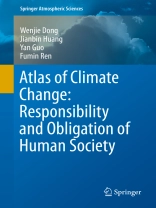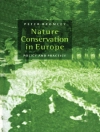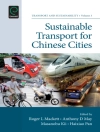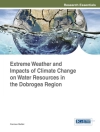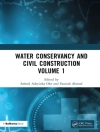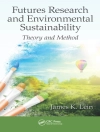This atlas and reference resource assembles the latest research findings on the responsibility and obligation of human society for historical climate change. It clearly and quantitatively estimates to what extent the developed and developing world are responsible for historical climate change with regard to anthropogenic carbon and sulfur emissions as well as global carbon trade, and so provides a potential tool to address the controversial issue of carbon emission reduction in international climate negotiations. Since the quantitative attribution of historical climate change is calculated based on CMIP5 models, the fidelity of these models in representing the observed climate change is also evaluated. In addition to evaluation, future climate change based on CMIP5 models is also shown both on global and regional scales (especially for China and its surrounding areas ) in terms of surface air temperature, precipitation, sea surface temperature, atmospheric circulations and Arctic Sea ice. The atlas also makes various comparisons among different multi-model ensemble methods in order to obtain the most reliable estimation.
Table of Content
Data and Methods.- Climate Change Historical Simulations and Projections.- Comparisons among Multi-model Ensemble Methods.- Responsibility for Historical Climate Change Induced from Developed and Developing World Anthropogenic Carbon Emissions.- Responsibility for Historical Climate Change Induced from Developed and Developing World Anthropogenic Sulfur Emissions.- Transferred Responsibility for Historical Climate Change Induced from Carbon Trade between Developed and Developing World.
About the author
Dong Wenjie: Professor of Beijing Normal University. His research interests include: Climate Dynamics, Climate modeling and integrated analysis. He is the PI of the project titled Super-Ensemble Projection and Attribution of Climate Change Based on CMIP5 funded by CMOST. He is also one of the lead authors of IPCC AR5 WGI and Climate Synthesis Report for Asia-Pacific Network for global change research (APN). He won the special contribution expert grant from the State Council of China in 1999. He has jointly published more than 120 papers and 3 books. He is so dedicated to climate change science and its application that his favorite slogan is ‘keep a weather eye on climate and global change’.
Recent publications:
Cheng HQ, Wu TW* and Dong WJ. 2008. Thermal Contrast between the Middle-Latitude Asian Continent and Adjacent Ocean and Its Connection to the East Asian Summer Precipitation. Journal of Climate 21:, 4992-5007
Chou J*, Dong WJ and Feng G. 2011. The methodology of quantitative assess economic output of climate change. Chinese Science Bulletin 56: 1333-1335
Dong WJ, Chou J* and Feng G. 2007. A new economic assessment index for the impact of climate change on grain yield. Advances In Atmospheric Sciences 24: 336-342
Dong WJ, Jiang Y* and Yang S. 2010. Response of the starting dates and the lengths of seasons in Mainland China to global warming. Climatic Change 99: 81-91
Dong WJ, Ren FM, Huang JB, Guo Y. 2013. The Atlas of Climate Change: Based on SEAP-CMIP5. Springer, 175pp. ISBN: 978-3-642-31772-9 (Print) 978-3-642-31773-6 (Online)
Jiang Y, Dong WJ*, Yang S and Ma J. 2008. Long-Term Changes in Ice Phenology of the Yellow River in the Past Decades. Journal of Climate 21: 4879-4886
Ke ZJ*, Zhang PQ, Dong WJ* and Li L. 2009. A New Way to Improve Seasonal Prediction by Diagnosing and Correcting the Intermodel Systematic Errors. Monthly Weather Review 137: 1898-1907
Li J, Dong WJ* and Yan Z. 2012. Changes of climate extremes of temperature and precipitation in summer in eastern China associated with changes in atmospheric circulation in East Asia during 1960–2008. Chinese Science Bulletin 57: 1856-1861
Peng J, Dong WJ*, Yuan W and Zhang Y. 2012. Responses of grassland and forest to temperature and precipitation changes in Northeast China. Advances In Atmospheric Sciences 29: 1063-1077
Wei T, Wang L, Dong WJ*, Dong M and Zhang J. 2011. A comparison of East Asian summer monsoon simulations from CAM3. 1 with three dynamic cores. Theoretical And Applied Climatology 106: 295-306
Wei T, Dong WJ*, Yuan W, Yan X and Guo Y. 2014. Influence of the carbon cycle on the attribution of responsibility for climate change. Chinese Science Bulletin: 59, doi: 10.1007/s11434-014-0196-7
Wei T, Yang S, Moore JC, Shi P, Cui X, Duan Q, Xu B, Dai Y, Yuan W, Wei X, Yang ZP, Wen TJ, Teng F, Gao Y, Chou JM, Yan XD, Wei ZG, Guo Y, Jiang YD, Gao XJ, Wang KC, Zheng XG, Ren FM, Lv SH, Yu YQ, Liu B, Luo Y, Li WJ, Ji DY, Feng JM, Wu QZ, Cheng HQ, He JK, Fu CB, Ye DZ, Xu GH and Dong WJ*. 2012. Developed and developing world responsibilities for historical climate change and CO2 mitigation. Proceedings of the National Academy of Sciences 109: 12911-12915
Yang ZY, Dong WJ, Wei T, Fu YQ, Cui XF, Moore JC, Chou JM. 2014. Constructing long-term (1948–2011) consumption-based emissions inventories. Journal of Cleaner Production, http://www.sciencedirect.com/science/article/pii/S0959652614002844#
Zhang J*, Wu L and Dong WJ. 2011. Land‐atmosphere coupling and summer climate variability over East Asia. Journal of Geophysical Research: Atmospheres (1984–2012) 116: D05117, doi:10.1029/2010JD014714.
